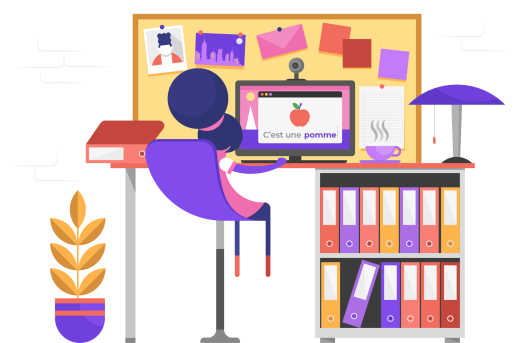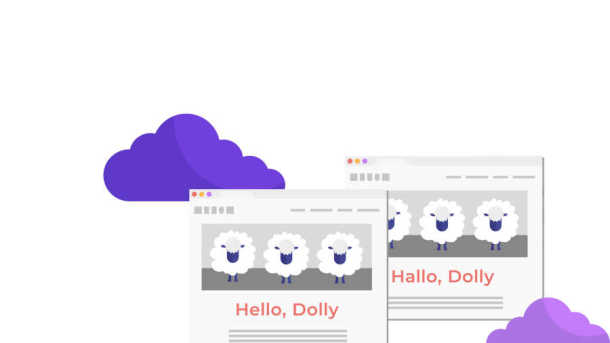Hiring professional translators to adapt every word of your website for a foreign audience can seem like a daunting (and expensive) proposition. As a result, companies could be convinced that their international outreach should be postponed indefinitely or abandoned entirely.
But let’s imagine, for a second, that those professional translators don’t have to address every word or even every web page.
Would the website translation project feel more manageable then? Surely yes. But would it also feel incomplete? That depends on who you ask.
In reality, professionally translating your entire website is often a self-imposed requirement.
Audiences want localized user experiences, but savvy brands understand that multiple translation methods can be used to create that outcome. By strategically combining both digital and human resources, companies can often go global sooner than expected.
When It’s Okay To Use Machine Translation For Website Translation
Machine translation currently occupies somewhat of an odd space in global content conversations.
Teams who haven’t used machine translation typically fear the branding blunders it could create. Those who have generally keep their experience under wraps out of fear that customers or colleagues will think they’ve cut corners.
In reality, there’s no need to treat machine translation as a dirty secret or dangerous weapon. As long as it’s deployed in the proper context, this approach can help brands safely reduce costs, accelerate projects, and extend reach.
The simplest context to start with is translating websites into the “long-tail” languages that make up the smallest portions of your current traffic. Any incremental revenue gained by presenting these audiences with a localized experience is essentially a bonus, and the potential penalty for offending their grammatical sensibilities in the process is very low.
Next, consider machine translating your long-tail source content as well. This includes pages that attract the least traffic and/or have the least influence on the customer journey. It also includes simple tasks that don’t merit human intervention, like translating apparel sizes and colors for a retail brand.
Lastly, machine translation can add value as a temporary solution that is later improved by human post-editing.
A hotel brand, for example, might leverage machine translation to launch a basic, functional version of its website ahead of a key holiday travel period instead of waiting an extra month for native translators to finish perfecting every paragraph.
When to Tap Non-Professional Talent For Website Translation
Improving upon the quality of machine methods does not necessarily require a translator’s certificate and a poet’s vocabulary. As long as you consistently deliver clear and coherent brand messages, customers will have little interest in identifying the exact messengers you enlisted.
With that said, be sure to include multilingual colleagues and crowdsourced supporters in your website translation talent search.
Not every company is blessed with these resources, of course, and their productivity is not as predictable as a paid team of dedicated professionals. But when available, their collective brand knowledge and project passion can be crucial assets.
These native-speaking allies can certainly be trusted to tackle the long-tail content described above, or refine text initially addressed by machine translation. Depending on their language proficiency and work availability, you can also task them with translating more elaborate content (that is still not quite essential to the customer journey). Bilingual employees, for instance, could complete descriptions for the community service initiatives listed on a software company’s corporate social responsibility web page.
The final caveat when working with non-professional collaborators is to manage them as exactly that: non-professional. Their generous contributions should be appreciated for what they are, and imposing tight deadlines and stringent review processes upon this group will not serve either side well.
When Only Professional Translators Will Do
The initial inclination companies have toward professional website translation is well-founded. Expanding your business beyond domestic borders is intimidating enough as it is, and the last thing you want to worry about is an audience that’s embarrassed, offended, or confused by your brand messaging.
Fluent, trained professionals should be the exclusive translators of any website text that is crucial to building brand impressions or driving customer conversions. This category often includes (but is not limited to):
- Company slogans and taglines
- Company history, leadership bios, and contact info
- Legal terms, statements, and disclaimers
- Website navigation elements
- Product and service pages
- Case studies and customer testimonials
- Checkout process, payment, and confirmation pages
- Customer service utilities
In addition to this pivotal content category, any mobile assets will also require the attention of professional translators.
Smaller screens immediately raise the impact of each word — and exponentially decrease tolerance for poor user interfaces. As a result, you’ll want an expert hand engineering your conversion-driven copy.
How to Conduct Your Translation Orchestra
Intelligent machines, supportive colleagues, and professional partners seamlessly working together to take your brand global faster and more affordably than you ever thought possible. Sounds delightful, doesn’t it?
But how well does it work it practice?
The truth is, discrete website translation resources will need a unifying force if they’re ever going to deliver the results you want. And today the only place that force can be found is inside superior translation management systems.
The best platforms easily embrace whatever translation resource roster you’ve assembled and facilitate workflows that suit everyone involved. And just as important, all project collaborators are given clear lines of communication to one another.
Because then, and only then, can these various instruments come together to create the symphonic strategy your stakeholders require.




